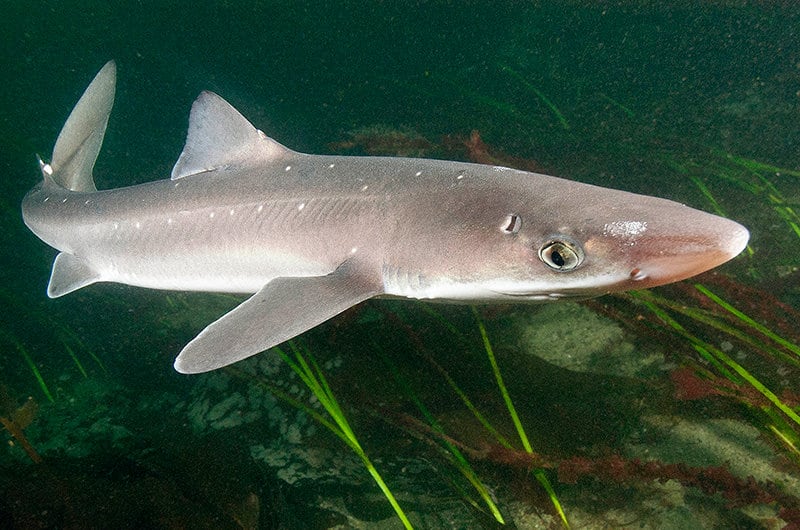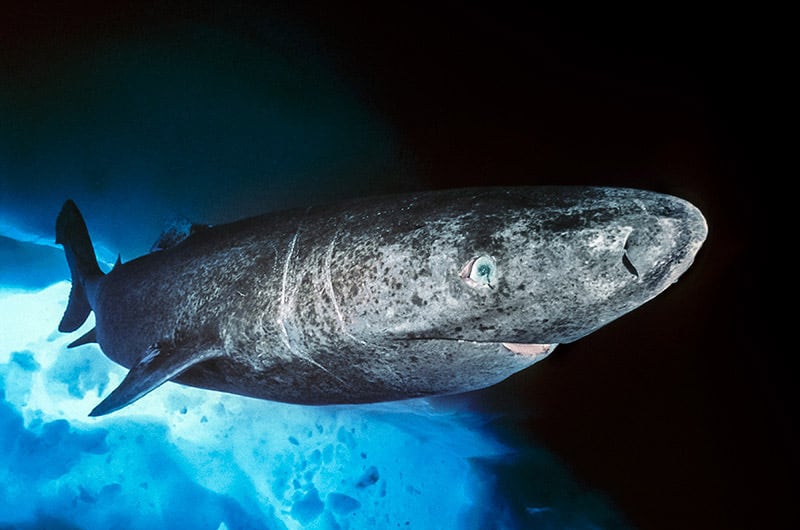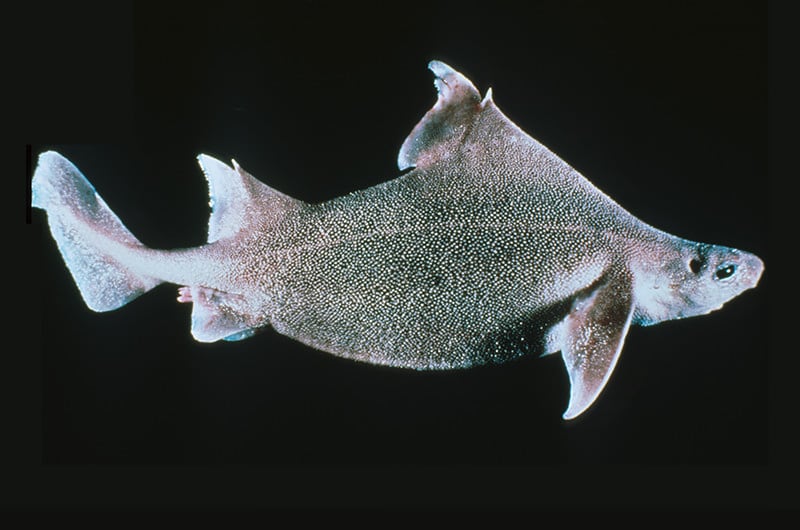Photo © Alexa Elliot
Photo © Alexa Elliot
Photo © Alexa Elliot

Typical species:
Spiny dogfish
Photo © Marinethemes.com
Families:
4
Genera:
24
Species:
141
Dogfish sharks
This order represents the second largest order and includes 7 families and about 113 species and their most distinguishing feature is the lack of an anal fin. Most species also have a spine in front of the first dorsal fin. The majority are deep water species, and some have luminescent organs. Certain species can reach large sizes for instance the greenland shark (Somniosus microcephalus) with 7 m. Scientists assume that the most abundant species of all known sharks may be the spiny dogfish (Squalus acanthias), the main species used for "fish & chips".

Typical species:
Spiny dogfish
Photo © Marinethemes.com
Dogfish sharks
The dogfishes include a great variety of small to very big sharks. Their biggest variety is in the deep water forms. While most dogfishes possess spines in front of their dorsal fins, some lack them and therefore have been put into different families in earlier years. However, all dogfishes lack an anal fin, a characteristics that is only shared by angel sharks, saw sharks and rough sharks. Dogfishes have a wide geographic and bathymetric range and are found in shallow and deep waters of all oceans. All members of this family show a ovoviviparous style of reproduction (aplacental viviparity). This family consists of 17 genera, including 65 to 70 species.

Typical species:
Greenland shark
Photo © BluePlanetArchive.com
Sleeper sharks
Sleeper sharks are found worldwide, from the Arctic Ocean to the Antarctic Ocean. However, they are also found in tropical and temperate waters. The sizes of the species can vary greatly. The Greenland sharks, for example, can reach a length of well over 6m and are with hundreds of years one of the most long-lived species in the animal kingdom. All members of this family show a ovoviviparous style of reproduction (aplacental viviparity).

Typical species:
Prickly shark
Photo © underseahunter.com
Bramble sharks
Bramble sharks represent a very small family consisting of one genus and 2 species. Both possess cylindrical, stout trunks, without ridges on the abdomen. Two spineless dorsal fins are present. Although bramble sharks resemble ancient sharks they possess 5 pairs of gill slits, where the 5th one is expanded in width. Small spiraculi are present. Both species prefer deeper water over the continental shelves and slopes. Their biology is poorly known, however it is generally accepted that they have a sluggish life style. They have a very large pharynx that is thought to suck in their prey by suddenly expanding their mouths. Both species show an ovoviviparous style of reproduction (aplacental viviparity).

Typical species:
Prickly dogfish
Photo © BluePlanetArchive.com
Roughsharks
The family of rough sharks consists of only 4 species. They have a very unique appearance including an unmistakable short body with strong abdominal ridges and very high, sail-like spined dorsal fins. Rough sharks possess a head which is slightly depressed, with large spiracles behind the eyes. They prefer deeper water over the continental shelves or upper slopes between 40 to about 700 m depths. Judging from their appearance they are probably sluggish animals. Their mouths are very small with small but with strong teeth, suggesting a diet of small bottom invertebrates and fishes. Rough sharks show an ovoviviparous style of reproduction (aplacental viviparity) with a litter of 7 or 8. All species belong to the same genus, Oxynotus.